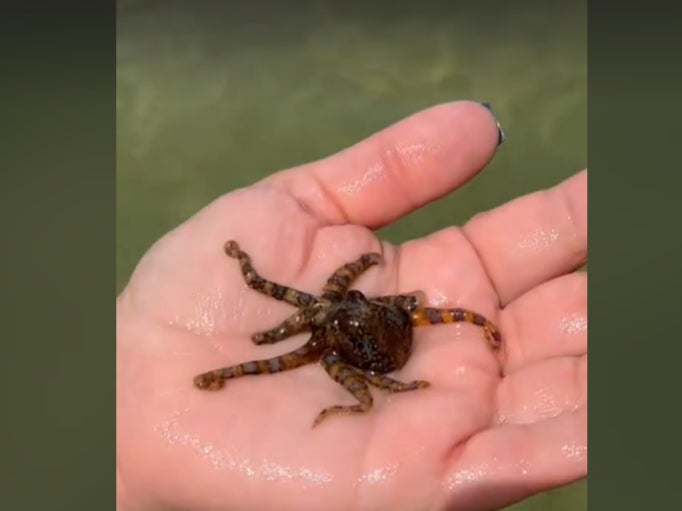Beachgoer ‘lucky to be alive’ after filming herself cradling one of Australia’s deadliest sea creatures
Venom of the blue-ringed octopuses can paralyse humans

Your support helps us to tell the story
From reproductive rights to climate change to Big Tech, The Independent is on the ground when the story is developing. Whether it's investigating the financials of Elon Musk's pro-Trump PAC or producing our latest documentary, 'The A Word', which shines a light on the American women fighting for reproductive rights, we know how important it is to parse out the facts from the messaging.
At such a critical moment in US history, we need reporters on the ground. Your donation allows us to keep sending journalists to speak to both sides of the story.
The Independent is trusted by Americans across the entire political spectrum. And unlike many other quality news outlets, we choose not to lock Americans out of our reporting and analysis with paywalls. We believe quality journalism should be available to everyone, paid for by those who can afford it.
Your support makes all the difference.A beachgoer in Australia was lucky to remain unharmed when she filmed herself picking up a venomous octopus that can kill humans.
In a video uploaded to TikTok, a woman with the username “katapilah” can be seen cradling the blue-ringed octopus in her left hand. The footage is captioned “the dangerously beautiful sea”.
The woman told Australian website news.com.au that she was unaware that the creature was a blue-ringed octopus, adding that she was in no hurry to pick one up again.
The marine animal gets its name from the bright blue rings that appear when it is threatened. Its venom contains tetrodotoxin, a powerful nerve toxin, which can cause respiratory failure in humans and lead to paralysis or even death.
The blue-ringed octopus can be found up to 50m deep along the coastlines of southern Australia.
The species have been described by the Australian Museum website as “one of the most dangerous animals in the sea”.
While their venom has resulted in human casualties, the octopuses can be “very shy and non-aggressive creatures that prefer to hide under ledges and in crevices,” the website said.
“Encounters with humans usually result in the octopus quickly darting for cover. It is only when the animal is picked up that it is likely to ‘bite’ and inject its paralysing venom,” it added.
The blue-ringed octopus has caused the death of at least three people in Australia, in addition to a number of near-fatalities.
Join our commenting forum
Join thought-provoking conversations, follow other Independent readers and see their replies
Comments